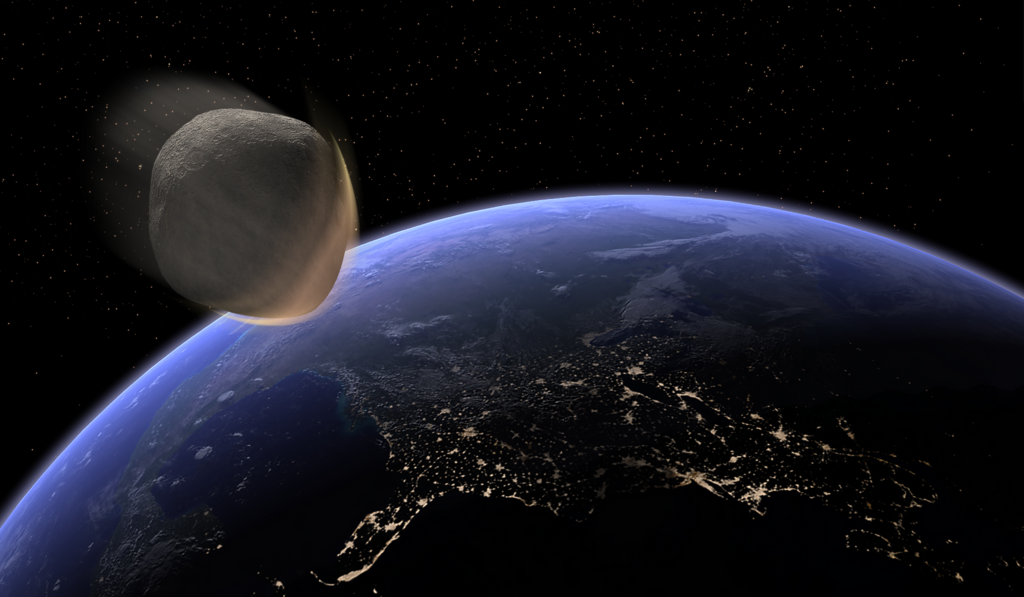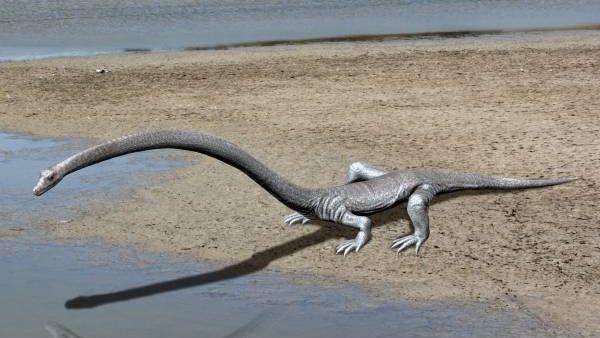The extinction of dinosaurs represents one of the most dramatic and fascinating chapters in Earth’s biological history. For decades, the asteroid impact theory has dominated scientific discourse about what caused these magnificent creatures to disappear after ruling our planet for over 165 million years. The Chicxulub impact, which occurred approximately 66 million years ago, created a crater more than 110 miles wide on Mexico’s Yucatán Peninsula and coincided with the end-Cretaceous mass extinction. However, while this cosmic collision was undoubtedly catastrophic, emerging evidence suggests a more complex narrative. Modern paleontological research indicates that dinosaurs may have faced multiple environmental challenges before the asteroid delivered its final blow. This article explores the multifaceted nature of dinosaur extinction and examines whether the asteroid impact truly acted alone in ending the dinosaurs’ long reign.
The Chicxulub Impact: What We Know

The Chicxulub asteroid impact represents one of the most significant cosmic collisions in Earth’s recent geological history. Scientists estimate the asteroid measured between 6-9 miles (10-15 kilometers) in diameter and struck with the force of billions of atomic bombs. The immediate aftermath included tsunamis, widespread fires, and an impact winter caused by dust and debris blocking sunlight. Geological evidence for this catastrophic event is compelling, with a worldwide iridium-rich layer marking the Cretaceous-Paleogene (K-Pg) boundary. This rare element, abundant in asteroids but scarce on Earth’s surface, provides a chemical fingerprint of the extraterrestrial impact. The timing perfectly coincides with the mass extinction event, and the discovery of shocked quartz and tektites (glass spherules formed during impacts) further strengthens the connection between the Chicxulub impact and dinosaur extinction.
Immediate Effects of the Impact

When the Chicxulub asteroid slammed into Earth, it triggered a cascade of devastating environmental consequences. The initial impact released energy equivalent to approximately 10 billion Hiroshima atomic bombs, generating earthquakes far exceeding anything on modern scales and massive tsunamis that swept coastal regions worldwide. Thermal radiation ignited global wildfires, while the impact ejected massive amounts of rock and sulfur-bearing compounds into the atmosphere. This created a “nuclear winter” effect, with dust and aerosols blocking sunlight for years or even decades, dramatically cooling global temperatures and collapsing photosynthesis-based food chains. Acid rain from the sulfur compounds would have acidified surface waters, while soot from wildfires further darkened skies. These combined effects created an environment where large-bodied animals requiring substantial food intake, particularly dinosaurs, faced insurmountable survival challenges in the immediate aftermath.
Dinosaur Diversity Before Impact
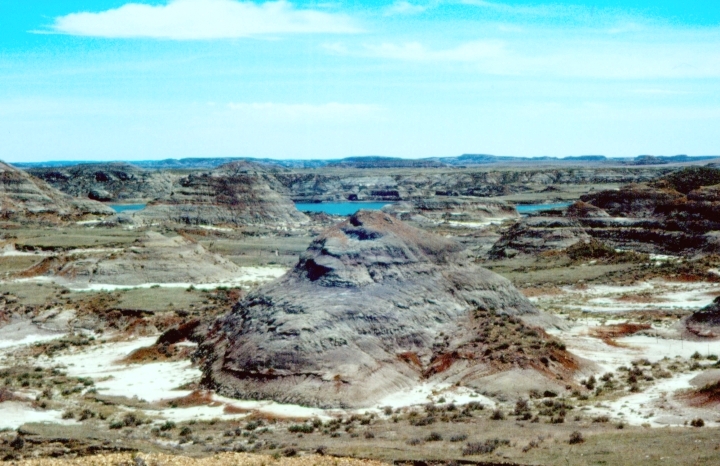
The state of the dinosaur population before the asteroid impact has become a critical factor in understanding their extinction. Recent studies examining fossil diversity suggest dinosaurs in some regions, particularly North America, may have been experiencing a decline in the late Cretaceous period. Researchers analyzing the Hell Creek Formation in Montana have documented reduced dinosaur diversity in the million years preceding the impact. However, this pattern wasn’t universal across all regions or dinosaur groups. Some dinosaur populations in places like Argentina and Romania appear to have maintained robust diversity right until the K-Pg boundary. This geographical variation has led some paleontologists to propose that dinosaurs faced regionally specific challenges rather than a global decline before the asteroid struck. Understanding these pre-impact population dynamics provides crucial context for evaluating whether dinosaurs were already vulnerable when the cosmic impact delivered its devastating blow.
The Deccan Traps: Earth’s Own Catastrophe

While the asteroid impact captures most attention in dinosaur extinction discussions, Earth was simultaneously experiencing one of its most massive volcanic events. The Deccan Traps eruptions in what is now India began before the asteroid impact and continued afterward, ultimately covering over 500,000 square kilometers with lava flows in some places over 2 kilometers thick. These eruptions released enormous quantities of carbon dioxide, sulfur dioxide, and other greenhouse gases into the atmosphere over hundreds of thousands of years. The timing of these eruptions has been precisely dated to the late Cretaceous period, with peak volcanic activity occurring remarkably close to the K-Pg boundary. The climate effects would have been profound, with evidence suggesting significant temperature fluctuations, acid rain, and periods of global warming and cooling. This prolonged volcanic activity may have created environmental stressors that weakened dinosaur ecosystems before the asteroid impact delivered the final blow.
Climate Instability and Habitat Changes

The late Cretaceous period witnessed significant climate fluctuations that may have stressed dinosaur populations before the asteroid impact. Geological evidence indicates that global temperatures experienced substantial shifts during this time, with some regions seeing temperature changes of 7-8°C within relatively short geological timeframes. Sea levels were also highly variable, with periods of both transgression (rising) and regression (falling) that dramatically altered coastal habitats where many dinosaur species thrived. Pollen records demonstrate shifting plant communities, suggesting changing food sources for herbivorous dinosaurs, which would have rippled through the entire food web. Additionally, some regions experienced increased seasonality with more extreme temperature variations between seasons. These environmental fluctuations would have required continuous adaptation from dinosaur species, potentially reducing their resilience to sudden catastrophic events. The combination of these ongoing climate-driven habitat changes may have created vulnerabilities in dinosaur populations that the asteroid impact then exploited.
Selective Extinction Patterns

One of the most intriguing aspects of the end-Cretaceous extinction is its selective nature, which doesn’t entirely align with predictions of an asteroid impact alone. While non-avian dinosaurs disappeared completely, many other terrestrial animals survived, including mammals, crocodilians, turtles, and the avian dinosaurs we now call birds. In marine environments, ammonites and mosasaurs vanished while many sharks persisted. This selective extinction pattern suggests factors beyond immediate asteroid impact effects were at play. Body size appears to have been one significant factor, with animals weighing more than 25 kilograms (55 pounds) having much higher extinction rates. Dietary specialization also influenced survival chances, with generalists faring better than specialists. Additionally, certain ecological niches and geographic locations showed different survival rates. These complex patterns indicate that while the asteroid impact may have been the primary extinction driver, pre-existing ecological vulnerabilities, adaptive capacities, and geographic factors all influenced which species ultimately survived.
The Multiple Impact Hypothesis

Some researchers have proposed that Earth may have experienced multiple cosmic impacts around the K-Pg boundary, creating a “perfect storm” of environmental disruptions. Evidence for this includes several impact craters potentially dating to the late Cretaceous or early Paleogene periods, such as Boltysh in Ukraine and Silverpit in the North Sea. The Shiva crater off India’s western coast, though controversial, has also been suggested as another major impact structure from this period. Multiple impacts could explain some of the complex extinction patterns observed, particularly if these impacts struck different environments over an extended timeframe. Additionally, the breakup of a larger asteroid or comet before impact could have created a series of smaller impacts spread across months or years. This scenario would have compounded environmental effects and potentially overwhelmed ecosystems’ recovery capacities. While the multiple impact hypothesis remains contested, ongoing research continues to investigate these other potential impact sites and their chronological relationship to Chicxulub.
Survivors: What Made Birds Different?
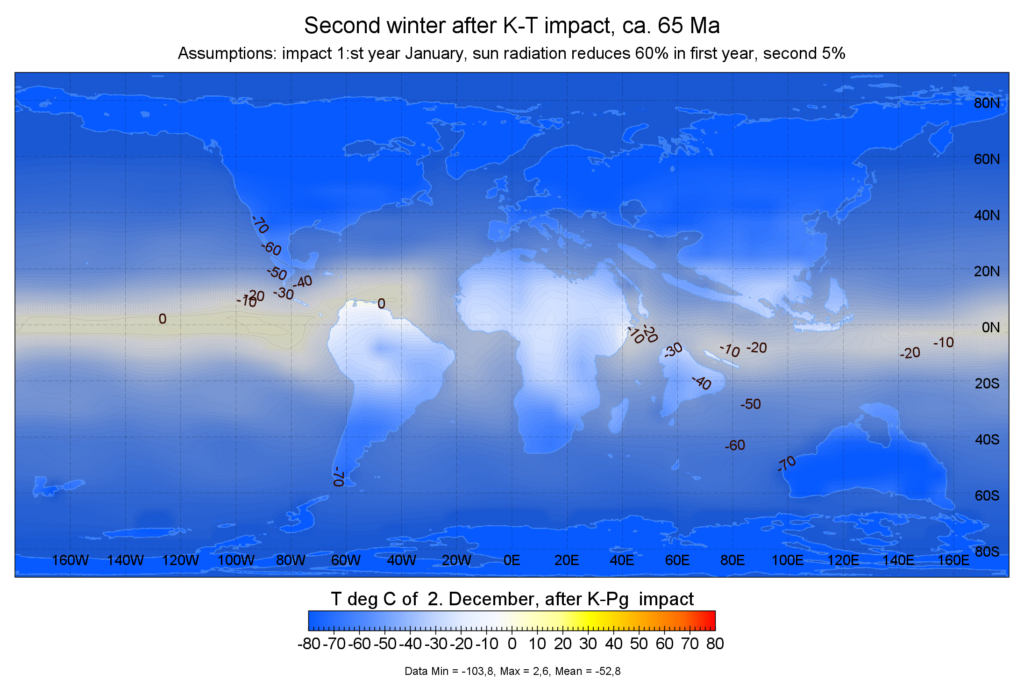
The survival of birds—technically avian dinosaurs—through the K-Pg extinction event provides crucial insights into extinction selectivity. Several adaptations appear to have given birds survival advantages over their dinosaurian relatives. Small body size was likely critical, as birds required less food and could survive on limited resources during the impact winter. Their beaked mouths allowed exploitation of seeds and nuts, food sources that remained viable when plants temporarily stopped photosynthesizing. Metabolic adaptations, including efficient respiratory systems and thermoregulation, may have helped birds cope with rapidly changing temperatures. Additionally, evidence suggests that ground-dwelling birds fared worse than tree-dwelling species, indicating that habitat preference influenced survival chances. The cognitive flexibility and behavioral adaptability of birds may have also played important roles in their persistence. Comparing the traits of surviving birds with extinct non-avian dinosaurs reveals that the extinction wasn’t simply random but selectively favored certain adaptations, suggesting that asteroid impact effects interacted with pre-existing biological characteristics to determine survival.
Global vs. Regional Extinction Patterns

The geographic distribution of dinosaur extinctions reveals intriguing patterns that complicate the asteroid-only extinction narrative. Fossil evidence suggests that dinosaur diversity was declining in some regions, particularly North America, before the impact, while maintaining robust populations in other regions, such as parts of Asia and South America. These regional variations imply that local environmental factors were already influencing dinosaur populations differently across the globe. Additionally, the extinction timeline appears slightly different in various locations, with some areas showing more gradual dinosaur disappearances than others. Distance from the Chicxulub impact site doesn’t entirely explain these differences, suggesting other factors were at play. Climate variations, including temperature gradients from the equator to the poles, created different regional challenges. The Deccan Traps eruptions would have had varying effects depending on global wind patterns and proximity. These geographical nuances suggest that while the asteroid impact delivered a global blow, its effects were modulated by regional environmental conditions that had already shaped local dinosaur populations.
Marine Ecosystem Collapse

The end-Cretaceous extinction wasn’t limited to land; marine ecosystems experienced equally devastating changes that provide important context for understanding the overall extinction event. Marine plankton populations collapsed dramatically at the K-Pg boundary, destroying the foundation of ocean food webs. Ammonites, which had thrived for over 300 million years, disappeared completely, along with mosasaurs, plesiosaurs, and numerous fish species. Ocean acidification from both asteroid impact effects and Deccan Traps volcanic gases would have severely affected shell-forming organisms. Evidence suggests that photosynthesis in surface waters was severely disrupted for months or years after the impact. Interestingly, deep ocean ecosystems appear to have been somewhat buffered from extinction, suggesting that food storage capabilities or independence from surface productivity influenced survival. These marine extinction patterns indicate that multiple stressors were affecting Earth’s oceans simultaneously, including temperature changes, acidification, and productivity collapse. The comprehensive nature of marine ecosystem disruption strengthens the case for multiple environmental factors working in concert rather than a simple asteroid impact alone.
The Case for Gradual Decline

Some paleontologists argue that dinosaurs were already amid a gradual decline before the asteroid struck. The fossil record from certain formations, particularly in North America, shows reduced dinosaur diversity in the final million years of the Cretaceous period. Environmental changes during this time included cooling temperatures in some regions and substantial sea level fluctuations that altered coastal habitats. Competition from emerging mammal groups may have placed additional pressure on smaller dinosaur species. Plant communities were also shifting, potentially affecting herbivorous dinosaurs’ food sources. Additionally, some dinosaur groups show evidence of reduced morphological innovation and speciation rates in the late Cretaceous compared to earlier periods. While these signals of decline aren’t universal across all regions or dinosaur groups, they suggest that at least some dinosaur populations were experiencing stress before the impact. This evidence supports a scenario where pre-existing vulnerabilities in dinosaur populations made them less resilient to the asteroid impact’s catastrophic effects.
Scientific Debate: Multiple Working Hypotheses

The scientific community continues to debate the relative importance of various factors in dinosaur extinction, with several working hypotheses under active investigation. The “Impact Winter” model emphasizes the asteroid’s effects alone, arguing that its environmental consequences were sufficient to cause the observed extinctions without additional factors. The “One-Two Punch” hypothesis suggests that Deccan volcanism weakened ecosystems before the asteroid delivered the knockout blow. Some researchers propose a “Perfect Storm” scenario where multiple factors—including impacts, volcanism, climate change, and ecological dynamics—coincided to create unprecedented environmental stress. Increasingly sophisticated dating techniques have allowed better synchronization of these various events, revealing complex temporal relationships. Computer modeling of climate effects has advanced significantly, allowing scientists to simulate combinations of impact and volcanic effects with increasing accuracy. The ongoing nature of this debate reflects how science operates—continuously refining hypotheses as new evidence emerges. Most researchers now acknowledge that dinosaur extinction likely involved multiple interacting factors rather than a single cause, though they differ on the relative importance of each factor.
Modern Implications and Mass Extinction Insights
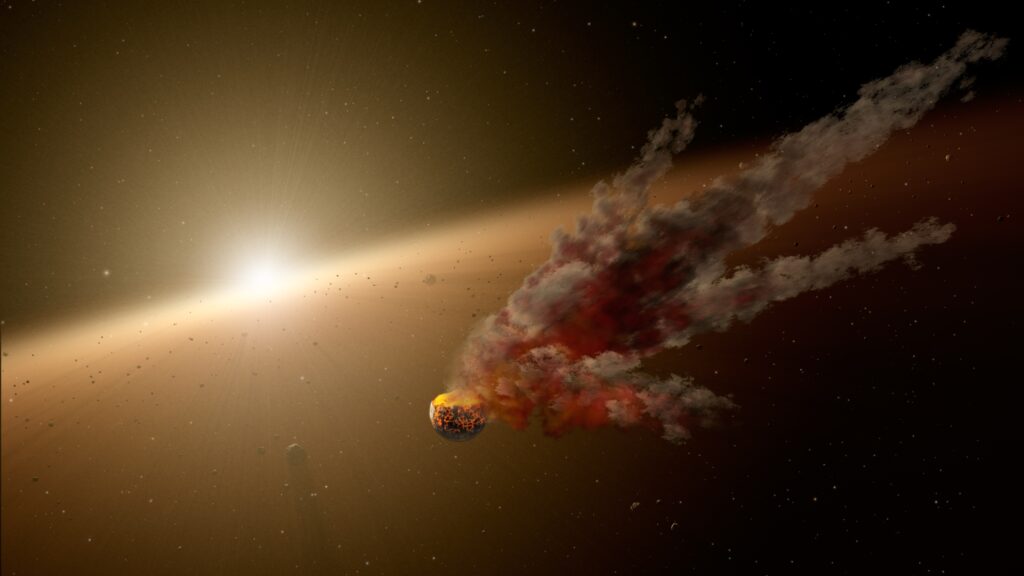
The study of dinosaur extinction provides valuable insights applicable to understanding current biodiversity challenges and Earth’s resilience. Research on the K-Pg extinction reveals how multiple environmental stressors can interact synergistically, creating more devastating consequences than each factor alone—a concerning parallel to today’s combination of climate change, habitat destruction, and pollution. Recovery patterns after the extinction demonstrate that ecological rebuilding requires millions of years, not human timescales, highlighting the essentially permanent nature of anthropogenic extinctions. The selective nature of the K-Pg extinction, where certain traits improved survival chances, suggests predictable patterns in how species respond to environmental crises. Additionally, understanding how Earth’s systems responded to the combined effects of impact and volcanism helps calibrate climate models predicting future changes. Perhaps most importantly, dinosaur extinction research reminds us that even dominant, seemingly invulnerable groups can disappear when environmental changes exceed their adaptive capacity—a sobering lesson as humanity creates global changes at unprecedented rates.
Conclusion: A Complex Extinction Narrative

The evidence increasingly points toward a more nuanced understanding of dinosaur extinction than the simple asteroid impact narrative that dominated scientific thought for decades. While the Chicxulub impact undoubtedly delivered a devastating global blow, dinosaurs faced a world already in flux from Deccan volcanism, climate fluctuations, and changing ecosystems. The asteroid strike likely acted as the coup de grâce rather than the sole agent of extinction. Different dinosaur populations around the world may have entered this final crisis with varying degrees of resilience, explaining some of the complex extinction patterns observed in the fossil record. The selective nature of which species survived, including birds as living dinosaurs, further indicates that multiple factors influenced extinction outcomes. As research techniques continue advancing, from high-precision dating methods to environmental proxies and computer modeling, our understanding of this pivotal moment in Earth’s history grows increasingly sophisticated. The emerging consensus views dinosaur extinction not as a simple story with a single villain, but as a complex interplay of cosmic bad luck, geological upheaval, and ecological vulnerability—a perspective that offers deeper insights into extinction processes past and present.

